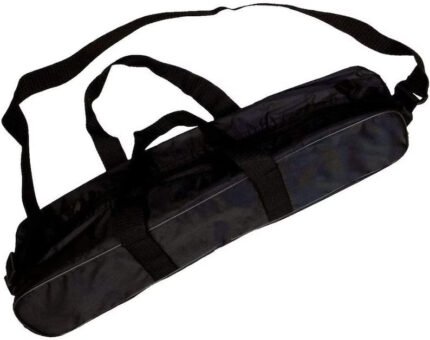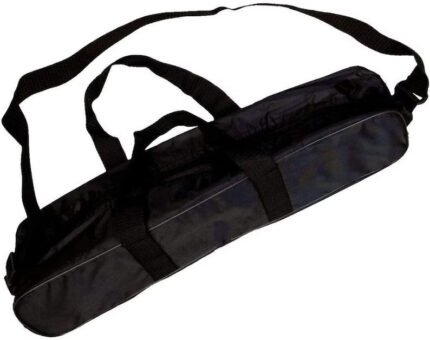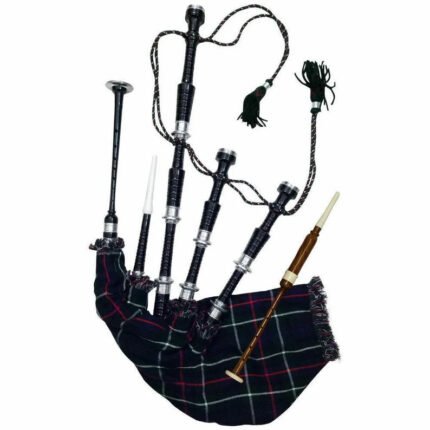Immerse yourself in the rich traditions of Scotland with Highland bagpipes from Bonnie Kilts. Our selection showcases beautifully crafted instruments designed for both newcomers and seasoned musicians. Made from premium materials, each bagpipe delivers an authentic sound that brings life to any event, from weddings to festivals. With a variety of styles available, you can find the perfect bagpipe that resonates with your musical passion. Explore our collection today and take a step into the vibrant world of Scottish music!
Buy Traditional Highland Scottish Bagpipe For Sale - Bonnie Kilts
Welcome to Bonnie Kilts, where we celebrate the rich traditions and music of Scotland with our beautiful selection of traditional Highland Scottish bagpipes. Known for their unique sound and deep-rooted history, bagpipes are more than just instruments; they are a symbol of Scottish culture and pride. This guide is designed to help you understand bagpipes better, appreciate their significance, and find the perfect one for your needs.
1. The Heritage of Highland Bagpipes
1.1 A Brief History
Bagpipes have been part of Scottish life for many centuries. While their exact origins are uncertain, evidence suggests that they have been around for thousands of years, dating back to ancient civilizations. The first mentions of bagpipes in Scotland appeared in the 15th century, where they were used in both joyful celebrations and solemn events. The sound of bagpipes can instantly transport listeners to Scotland, evoking feelings of nostalgia and connection to the past. Understanding this history helps us appreciate why bagpipes are so beloved.
1.2 Cultural Significance
In Scotland, bagpipes are more than just musical instruments; they represent the spirit and identity of the Scottish people. They are played at weddings, funerals, parades, and other important gatherings. The sound of the bagpipes can inspire feelings of joy, remembrance, and pride, making them an essential part of Scottish culture. At Bonnie Kilts, we respect this cultural significance and aim to provide authentic bagpipes that reflect the craftsmanship and traditions passed down through generations.
1.3 The Evolution of Bagpipes
Over the years, bagpipes have changed in both design and sound. From simple beginnings, they have evolved into complex instruments. Early bagpipes were often made from animal skins and wood, while modern bagpipes may use synthetic materials that improve their durability and sound quality. This evolution shows how bagpipes can adapt and thrive in different musical styles, ensuring they remain relevant in today’s music scene.
2. Types of Highland Bagpipes
2.1 Great Highland Bagpipe
The Great Highland Bagpipe is the most famous type of bagpipe. Known for its loud and powerful sound, it is often used in military bands and traditional Scottish music. This type of bagpipe consists of several parts:
- Chanter: The pipe that the player blows into to produce the melody. It has holes that the player covers with their fingers to create different notes.
- Drones: These pipes create a constant sound that accompanies the melody from the chanter. The Great Highland Bagpipe usually has three drones—two tenor drones and one bass drone.
- Bag: The bag holds the air that the player pushes through the chanter and drones. It is typically made from animal hide or synthetic materials to maintain a steady airflow.
2.2 Smallpipes
Smallpipes are a quieter version of bagpipes, making them perfect for indoor performances and small gatherings. Unlike the Great Highland Bagpipe, smallpipes use a closed reed system, producing a softer and sweeter sound. This style is often preferred by beginners or those who want a more delicate sound. At Bonnie Kilts, we have a variety of smallpipes that cater to different musical tastes, ensuring everyone can find an instrument they love.
2.3 Uilleann Pipes
While Uilleann pipes are originally from Ireland, they have gained popularity in Scottish music. These pipes use a bellows instead of being blown by mouth, creating a unique sound that is both rich and mellow. Uilleann pipes can play a wide range of music, from traditional folk tunes to contemporary compositions. This section will describe their features and how they differ from Highland bagpipes, making them a valuable addition to the bagpipe family.
2.4 Other Variants
In addition to the common types, there are many regional styles of bagpipes, each with its distinct sound and heritage. Some of these include:
- Border Pipes: Originating from the Scottish Borders, these pipes produce a distinctive, robust tone and are often featured in folk music.
- Northumbrian Pipes: Known for their gentle and sweet sound, these pipes are smaller and are played with a different technique.
Exploring these variants allows musicians to appreciate the diversity within the world of bagpipes and choose an instrument that fits their personal style.
3. The Craftsmanship Behind Bonnie Kilts Bagpipes
3.1 Materials Used
At Bonnie Kilts, we believe in using only the best materials for our bagpipes. From the dense African blackwood to modern synthetic materials, the quality of these materials greatly affects the instrument's sound and durability. This section will explain how different materials impact the look, feel, and performance of the bagpipes. For instance, blackwood is known for its beautiful finish and rich tone, while synthetic materials can provide excellent durability and weather resistance.
3.2 Handmade Craftsmanship
Every bagpipe we offer is carefully crafted by skilled artisans who have a deep understanding of their craft. Making a bagpipe is a meticulous process that requires patience and precision. The steps involved in crafting a traditional Highland bagpipe include:
- Turning and Shaping: Artisans shape the wood using specialized tools to ensure that each part fits together perfectly.
- Finishing Touches: After shaping, the wood is sanded, polished, and sometimes varnished to enhance its appearance and protect it from wear.
- Assembly: Finally, the components are carefully assembled, ensuring that everything fits snugly to produce the best sound possible.
3.3 The Importance of Sound Quality
Sound quality is crucial when it comes to bagpipes, as it affects both the player’s experience and the enjoyment of the audience. This section will discuss what makes a bagpipe sound good, including:
- Drone Tuning: Properly tuned drones create a harmonious sound that complements the melody played on the chanter. If the drones are out of tune, the overall sound will suffer.
- Reed Selection: Different types of reeds can dramatically change the instrument's sound. Choosing the right reeds for your style and preferences is essential.
- Bag Construction: The material and construction of the bag play a vital role in controlling airflow and sound production.
3.4 Customization Options
We understand that every musician has unique tastes and preferences. At Bonnie Kilts, we offer customization options for our bagpipes, allowing you to create an instrument that truly reflects your personality. This section will cover the various customization options available, such as:
- Choice of Materials: You can select specific woods or synthetic materials for different parts of the bagpipe.
- Design Features: Custom engraving, decorative mounts, and color options allow you to personalize the look of your instrument.
- Tuning Preferences: Musicians can choose their preferred tuning, ensuring the bagpipe suits their playing style.
4. Selecting the Right Bagpipe
4.1 Understanding Your Needs
When it comes to choosing the right bagpipe, it’s essential to consider what you need from the instrument. This section will guide you through the key factors to think about, such as your skill level, the type of music you want to play, and where you plan to perform. For example:
- Skill Level: If you’re a beginner, you may want to start with a simpler model that’s easier to play. More experienced players might look for more advanced options with additional features.
- Playing Style: Different types of music require different bagpipes. Make sure to choose one that aligns with your musical interests.
- Performance Environment: Consider whether you’ll be playing indoors, outdoors, or at formal events, as this can influence your choice.
4.2 Beginner vs. Advanced Players
Whether you’re just starting or have been playing for years, Bonnie Kilts has the right bagpipe for you. This section will recommend specific models for beginners and advanced players alike, making it easier for you to find the perfect instrument.
- For Beginners: We offer beginner-friendly bagpipes that are designed for ease of play. These instruments are typically made with durable materials that can withstand the learning process.
- For Advanced Players: Our selection for experienced players features high-quality bagpipes made from premium woods, crafted for those who seek exceptional sound and performance.
4.3 Trying Before You Buy
Buying a bagpipe is a significant investment, so it’s essential to try out different instruments before making a decision. This section will explain how Bonnie Kilts makes it easy for you to test bagpipes:
- In-Store Demos: Visit our store to play different models and get advice from our knowledgeable staff who can help you find the right fit.
- Trial Periods: For select models, we offer a trial period, allowing you to take the bagpipe home and try it out in various settings before you commit to your purchase.
4.4 Accessories to Consider
When purchasing a bagpipe, it’s also important to think about the accessories you might need. This section will list essential accessories such as:
- Bag Covers: These protect your bagpipe from dust and damage when not in use.
- Reed Maintenance Kits: Keep your reeds in good shape with the right maintenance tools.
- Learning Resources: Instructional books and online materials can help beginners learn how to play effectively and improve their skills.
5. Caring for Your Bagpipe
5.1 Maintenance Tips
To keep your bagpipe in great condition, regular maintenance is essential. This section will share some straightforward maintenance tips to help you care for your instrument:
- Regular Cleaning: After each use, take the time to clean your bagpipe. Wipe down the exterior and empty the bag to prevent moisture buildup, which can lead to mold or damage.
- Tuning: Check your bagpipe regularly for tuning and make adjustments as needed. A well-tuned instrument sounds much better and enhances your playing experience.
- Proper Storage: When you’re not using your bagpipe, store it in a cool, dry place, ideally in a protective case to prevent scratches and damage.
5.2 Troubleshooting Common Issues
Sometimes, even with the best care, bagpipes may encounter problems. This section will address common issues players may face and how to troubleshoot them effectively:
- Reed Problems: If your sound is weak or uneven, check the reeds for wear or damage. Replacing worn reeds can often solve sound issues.
- Droning Issues: If your drones are not sounding, ensure they are fitted correctly and that the bag is inflated properly. Sometimes adjusting the drone's position can help.
- Air Leaks: Inspect your bag and joints for leaks that might disrupt airflow. A quick fix may be possible with some tape or by replacing a faulty part.
5.3 Professional Repairs
For more complex issues, professional repairs may be necessary. This section will emphasize the importance of seeking expert help for your bagpipe maintenance:
- Skilled Technicians: Our experienced technicians at Bonnie Kilts understand bagpipes inside and out. They can handle repairs and adjustments, ensuring your instrument remains in excellent condition.
- Assessment Services: We also offer assessment services to evaluate your bagpipe and recommend any necessary repairs or maintenance, helping you extend the life of your instrument.
6. The Joy of Playing Bagpipes
6.1 Learning to Play
Playing the bagpipes is a unique and rewarding experience. This section will provide tips and resources for those looking to learn how to play:
- Online Tutorials: There are many online resources available, including videos and tutorials, that can help you understand the basics of playing.
- Local Classes: Consider joining classes or workshops in your area to receive hands-on instruction from experienced players who can guide you through your learning journey.
6.2 Joining a Community
Being part of a bagpiping community can make learning and playing even more enjoyable. This section will explore the benefits of connecting with fellow musicians:
- Networking Opportunities: Engage with other bagpipers to share experiences, techniques, and tips. This networking can help you grow as a musician.
- Performance Opportunities: Many communities organize events and competitions where you can showcase your skills and connect with other musicians. Participating in these events can be a fun way to gain experience.
6.3 Performing with Confidence
Once you’ve learned to play, performing can be nerve-wracking. This section will offer strategies to help you build confidence for performances:
- Practice Makes Perfect: The more you practice, the more confident you will feel. Make practice a regular part of your routine.
- Start Small: Begin by performing for friends or family to get comfortable playing in front of an audience before moving on to larger gatherings.
- Focus on the Music: Concentrate on the joy of sharing your music rather than worrying about mistakes. Everyone makes errors, and it’s all part of the learning process.
Conclusion
At Bonnie Kilts, we are passionate about providing high-quality traditional Highland Scottish bagpipes that honor Scotland's rich musical heritage. Whether you are a beginner just starting your journey or an experienced player looking for the perfect instrument, we have a wide range of options to suit your needs. Our commitment to craftsmanship, sound quality, and customer satisfaction sets us apart. Explore our collection of bagpipes today and discover the joy of playing this unique and beloved instrument!




















